The E85 Generation BMW Z4 is a Used Car Hidden Gem

Contents
Imagine a spirited drive along your favorite road in a top-down roadster. The scenery rushes past, and there’s nothing but sky above you. With nicely weighted steering and near 50:50 weight balance, the chassis becomes an extension of your fingertips, while your feet coax beautiful arias from the smooth-spinning inline-six under the hood.
It’s no pipe dream. Thanks to the magic of depreciation, this fantasy, in the shape of the E85 generation BMW Z4, can be yours for less than $15,000.
And considering that buys you a premium German roadster with some of the best powertrain options ever offered in a BMW, we think it represents an outstanding buying opportunity in today’s market.

Introduction
Introduced for the 2003 model year, the BMW Z4 is the successor to the Z3, BMW’s popular roadster from the 1990s. Like the Z3, it’s a compact, front-engine, rear-wheel-drive, two-seater available as a roadster (E85 chassis code) and, starting in 2006, also as a coupe (E86 chassis code).
But unlike the Z3, with its curvaceous retro styling inside and out, the Z4 features radically modern lines and sharp angles. Credit goes to Chris Bangle, BMW Group’s Chief of Design at the time, and his unique “flame surfacing” design language. Love it or hate it, the styling is anything but bland.
Running through the 2008 model year, the first generation Z4 came in wide range of variations, with flavors to suit all tastes, from the plain vanilla 2.5i with its 184 horsepower inline six to full banana split M variants fitted with an M3-derived “S54” engine that cranks out 330 horses on its way to a racy 8,000 rpm redline.

Driving Impressions
You can think of the Z4 as a more comfortable and more powerful Mazda Miata. Both are compact roadsters with sharp handling. Both have responsive naturally-aspirated engines mated to slick-shifting manual transmissions. And both are incredibly fun to drive.
One way they diverge is in weight. A Miata, depending on the year, weighs anywhere from 500 to 600 pounds less than the E85 Z4. And that weight difference is apparent, too, helping the Miata to change direction more instantaneously and feel nimbler, especially on tight twisty roads.
On the positive side for the Z4, though, some of that extra mass contributes to a significantly stiffer structure. Where the Miata suffers from cowl shake and rattles over broken pavement, the Z4 remains unperturbed.
The Z4’s rigid structure helps it to deliver excellent ride quality. Befitting its nature as a dedicated sports car, the ride is firm, especially with the optional Sport suspension. But the ride is never harsh — particularly after you’ve ditched the overly-stiff run-flat tires that came standard on these cars when new.
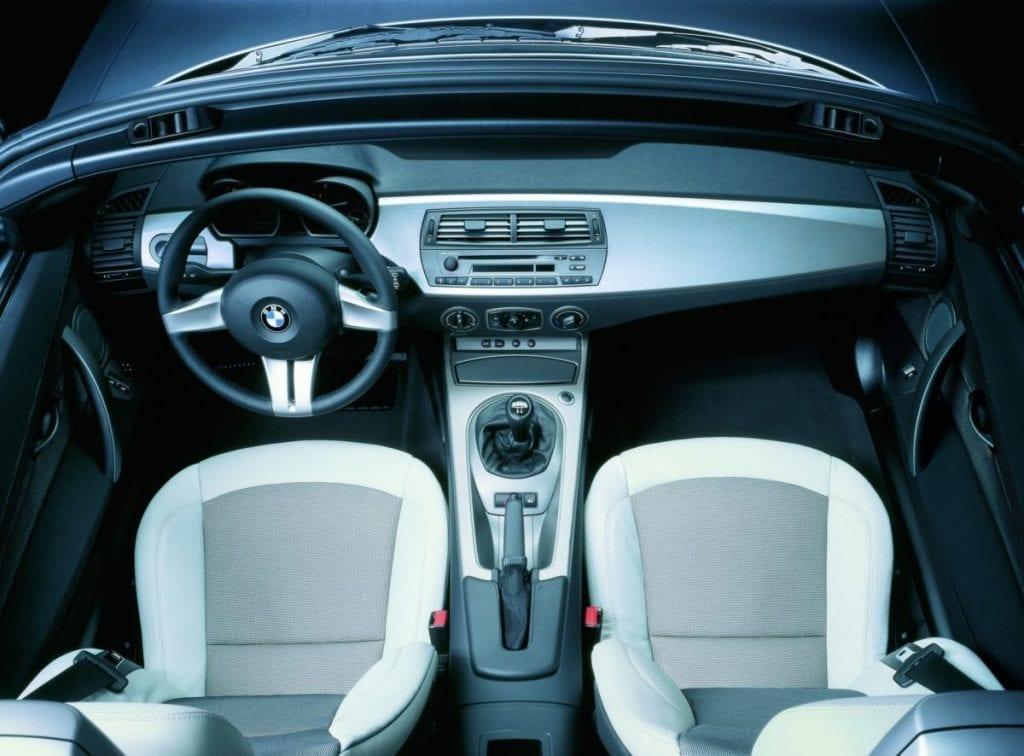
Another thing that extra weight buys you is luxury. The Z4 is equipped with ample soft-touch plastics plus real aluminum or wood and leather trim. Most examples come equipped with features that you can only get on a late-model, fully-loaded Miata, including a power-folding top, auto-dimming mirrors, and automatic climate control.
Adding to the feeling of luxury is the Z4’s relatively spacious and comfortable interior. All models have height-adjustable driver and passenger seats. Outward visibility is good, even with the top up. And road noise is kept unobtrusive by the double-lined fabric top. (That said, top-down wind buffeting is noticeable, so a factory or aftermarket wind deflector is recommended.) The Z4 roadster is even practical with 10.2 cubic feet of truck space — almost double that of an NC generation Miata (5.3 cu ft.) or a Honda S2000 (5.0 cu ft.) — providing plentiful luggage capacity for a weekend getaway for two.
The Z4 also has more safety equipment than a Miata, including a standard six airbags plus electronic driving aids (that can thankfully be shut off whenever you like).
And let’s not forget that the German roadster boasts two extra cylinders over the Mazda, making even the weakest Z4 more powerful than any factory Miata to date.
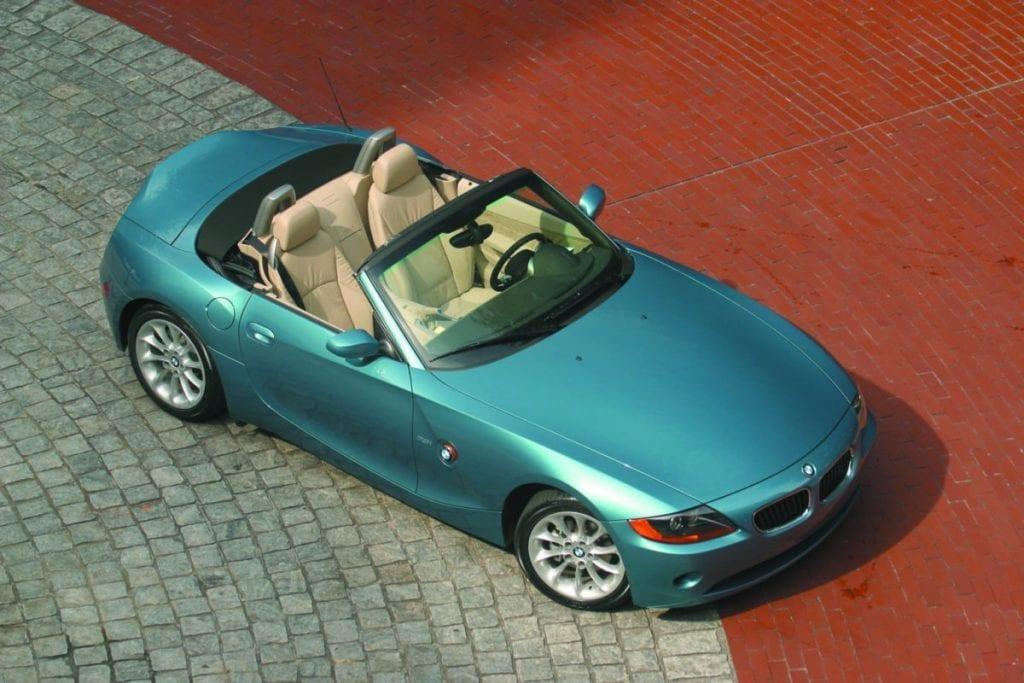
Model Overview
2003-2005 Z4 2.5i Roadster
Offered as the entry-level trim, the 2.5i Roadster came equipped with a 2.5 liter inline 6 cylinder engine (code name “M54”) generating 184 horsepower at 6000 rpm and 175 lb-ft torque at 3500 rpm.
It’s the least powerful Z4 configuration, but it’s also the lightest, weighing in at just over 2900 pounds. That makes it capable of sub-7 second sprints to 60 miles per hour — reasonably quick even by today’s standards.
A 5-speed manual Getrag transmission came standard, with a ZF-sourced 5-speed automatic optional. With either gearbox, fuel economy was rated at 18 mpg city and 26 mpg highway.
Current prices for these range from $5500 to $9500, depending on the year, mileage, and condition, making it the cheapest way into an E85 Z4. It’s also the most common variant, which means you can be picky when perusing the listings.
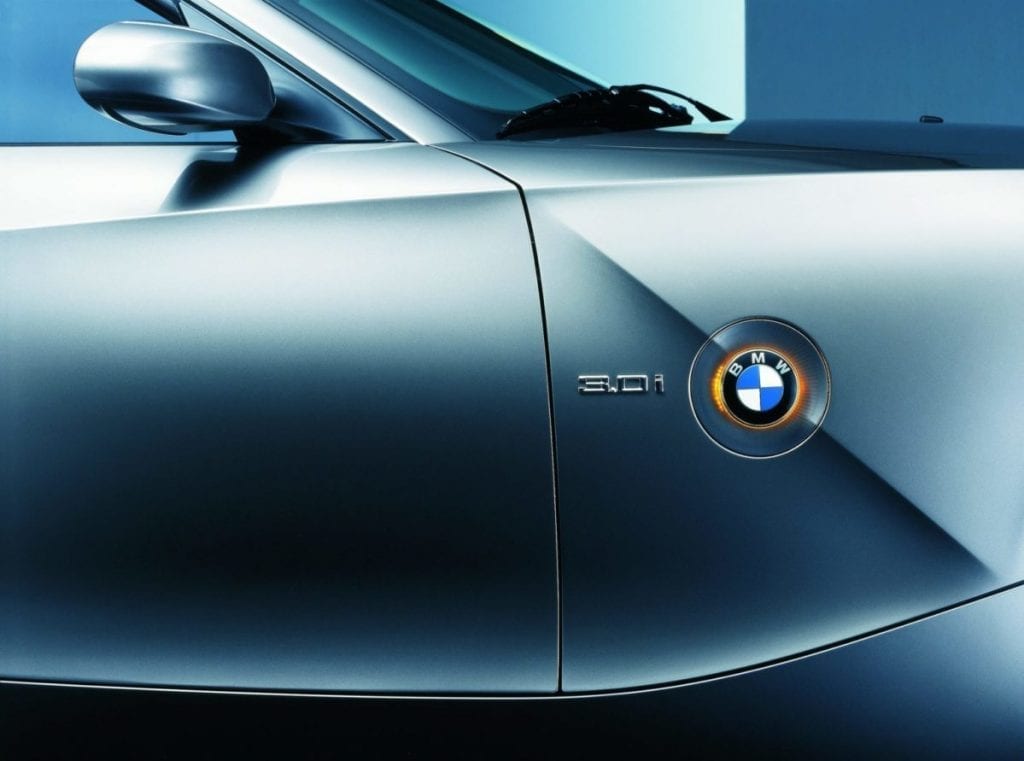
2003-2005 Z4 3.0i Roadster
The 3.0i is the faster, more athletic brother to the 2.5i, and it features additional standard equipment like bigger brakes and wheels, leather upholstery, plus a trip computer.
Power comes from a larger 3.0 liter version of the M54 inline six, generating 225 horsepower at 5900 rpm and 214 lb-ft torque at 3500 rpm. Even with about 100 extra pounds to carry, the added power boosts acceleration quite noticeably, with dashes to 60 mph taking just 5.9 seconds.
The 3.0i’s standard manual gearbox is sourced from ZF this time and gets one extra cog, making it a 6-speed, while available as options were the same 5-speed ZF ‘box from the 2.5i or BMW’s 6-speed sequential manual gearbox (SMG). No matter which gearbox was fitted, EPA fuel economy ratings were 18 mpg city and 27 mpg highway.
Current 3.0i prices range from $6500 to $10,500 for good examples. There are fewer 3.0i cars out there, so more patience may be necessary to find the right one. But it’s worth the time and effort if you’re looking for more spirited performance. An added benefit is that the manual gearbox’s added 6th gear drops engine speeds on the highway, making long-range cruising more relaxed.

2006-2008 Z4 3.0i Roadster
For 2006, the Z4 was refreshed visually with revised tail lights, front and rear bumpers, as well as new wheel choices, and mechanically with new engines and transmissions from the E90 generation 3 Series. The 2.5i was fazed out, making the 3.0i the model’s entry level trim.
Its new 3.0 liter “N52” inline six, featuring a lightweight magnesium and aluminum engine block, was rated at 215 horsepower at 6250 rpm and 185 lb-ft torque at 2750 rpm. It’s capable of pulling the 3020 pound car to 60 mph in 6.2 seconds — much quicker than the old 2.5i, though also a touch slower than the pre-2006 3.0i.
The ZF 6-speed manual was the standard gearbox, with a new 6-speed automatic, also from ZF, available as an option. Fuel economy ratings were pegged at 18 mpg city and 28 mpg highway.
Current prices range from $7000 to $11,000 for desirable examples.

2006-2008 Z4 3.0si Roadster
The 3.0si is just like its 2006-on 3.0i sibling but with power boosted to 255 horsepower at 6600 rpm and 220 lb-ft of torque at 2750 rpm, thanks to a trick 3-stage intake manifold plus some engine management software changes. These enhancements also deliver noticeably more midrange punch and help to trim its 0-60 mph time to 5.6 seconds.
As the upgraded trim, the 3.0si also features more standard goodies like leather upholstery, automatic climate control, and a trip computer.
Like the base model, it’s available with either a standard 6-speed manual or an optional 6 speed-automatic transmission, with EPA ratings of 18 highway and 28 mpg highway for the manual and 1 mpg less on the highway for the automatic.
Current prices range from $8000 to $12,000 for nice examples.

2006-2008 Z4 3.0si Coupe
BMW introduced a fixed-top version of the Z4 beginning in 2006 (chassis code E86). Its fastback design not only provides it with a unique and shapely silhouette, it also allows for more cargo capacity beneath the hatchback door (12 cubic feet).
The coupe was offered with the 3.0si roadster’s same powertrain — the 255 hp N52 inline six backed by either the 6-speed manual or the 6-speed automatic — delivering performance and economy figures nearly identical to the roadster. The most notable difference is probably that the coupe is a bit quieter inside at speed.
If you prefer the all-weather protection and security of a metal roof, or just its cool and unusual lines, the coupe is an excellent choice. There are far fewer examples, though, so finding a nice one may take time.
Current prices range from $11,000 to $15,000 (and higher for unusually low-mile examples), a significant premium over the roadster.

2006-2008 M Roadster and M Coupe
As any BMW fan knows, “M” means that it’s the fast one — and that you’ll have to pay handsomely to get it. True to form, the M Roadster and M Coupe both cost significantly more than a non-M Z4. But they both deliver loads of additional performance for anyone who has the extra budget and wants the most exciting version.
The biggest M difference is its heart, BMW’s 3.2 liter “S54” inline six engine, rated at a mighty 330 horsepower at 7900 rpm and 262 lb-ft torque at 4900 rpm. Mated to a 6-speed manual gearbox — no automatic was offered — it hurtles the car to 60 mph in a scant 4.9 seconds.
M trims also get sportier front and rear bumpers, a quad tip exhaust, a thick-rimmed leather steering wheel, sport seats, 18 inch wheel and tires, a sport-tuned suspension, bigger brakes, and of course M badges everywhere.
Fuel economy is probably not your biggest worry if you’re considering an M car, which is good because the EPA estimates a return of 15 mpg city and 22 mpg highway.

Only around 3,000 M Roadsters were produced for North America. It’s likely to become a collectible. As such, values are a big step up from the non-M roadster. Current prices range from about $16,000 for a higher mileage (~100k) specimen to as much as $30,000 or more for a clean, low-mile example.
The M Coupe is rarer still, with only about 1,800 units produced for North America. The M Coupe has already become a collectible, and good examples are beginning to appreciate in value, starting from about $22,500 for a well-used but still serviceable car to $40,000 and up for a minty fresh one.
Which Z4 Should You Buy?
We recommend the early 3.0i or the later ’06 to ’08 3.0i and 3.0si trims, with 225, 215, and 255 horsepower respectively. They all offer great handling, snappy acceleration, good fuel economy, as well as robust and reliable powertrains — and they all cost significantly less to acquire and to maintain than an M example.
Another benefit of the 3.0 liter cars is that their manual gearboxes feature an additional cog over the 2.5i’s 5-speed, a bonus if you plan on using the car for highway excursions. Sixth gear drops the engine revs significantly at speed, reducing noise and improving fuel economy.
And on the subject of gearboxes, we also highly recommend buying a three-pedal car — even if you have little experience driving stick or are concerned about it feeling tiresome in traffic. Clutch engagement in the Z4 is linear and predictable, pedal effort is minimal, and the shifter snicks easily into every gear without a second guess. Even a novice will quickly feel confident, and more experienced drivers will appreciate the pedal arrangement, which is ideal for heel-and-toe shifting. Regardless of skill, rowing your own gears makes driving a Z4 significantly more entertaining. This is a sports car after all.

Maintenance & Running Costs
Running costs are reasonable for a German sports car. Since many components are shared with the popular E46 and E90 generation 3 Series models, parts are widely available, and prices are kept in check (especially for non-M cars).
Using an independent BMW specialist for maintenance, you should budget about $100 per month on average (~$1200 per year) to keep the car in top running order.
And if you like turning your own wrenches, there is ample DIY repair information online. Whenever there’s something wrong, the issue and repair have likely been documented on one of the BMW forums or on YouTube.
Keep in mind the Z4 requires premium unleaded fuel.
Problem Areas
Even the newest E85 or E86 generation Z4 is already more than ten years old, so there are several key issues to be aware of.
As always, we recommend having a BMW specialist inspect any car that you’re seriously considering before you pull the trigger. But knowing these potential weak spots can help you identify the strongest examples.
Cooling System
The Z4 has plastic coolant reservoirs that are prone to crack or split with age. A broken tank will result in a sudden loss of coolant with the potential of severe engine damage from overheating. Rubber coolant hoses and water pumps also degrade over time and may need to be replaced if they are original to the car.
The face-lifted ’06 to ’08 non-M models have electric water pumps that are significantly more expensive than the previous years’ mechanical pump. These components should be replaced as preventative maintenance right around the 100k mile mark.
Intake DISA Valves
Another common* issue is broken DISA valves. These valves attach to the intake manifold and regulate the air entering the engine to enhance overall power and economy. Symptoms of bad valves include rattling noises, rough idle, hesitation when accelerating, and check engine lights. In dire cases, bits of the valve can fall into the engine, causing internal damage.
*The 2006 to 2008 3.0i and the M cars are exempt from this issue; neither has DISA valves.
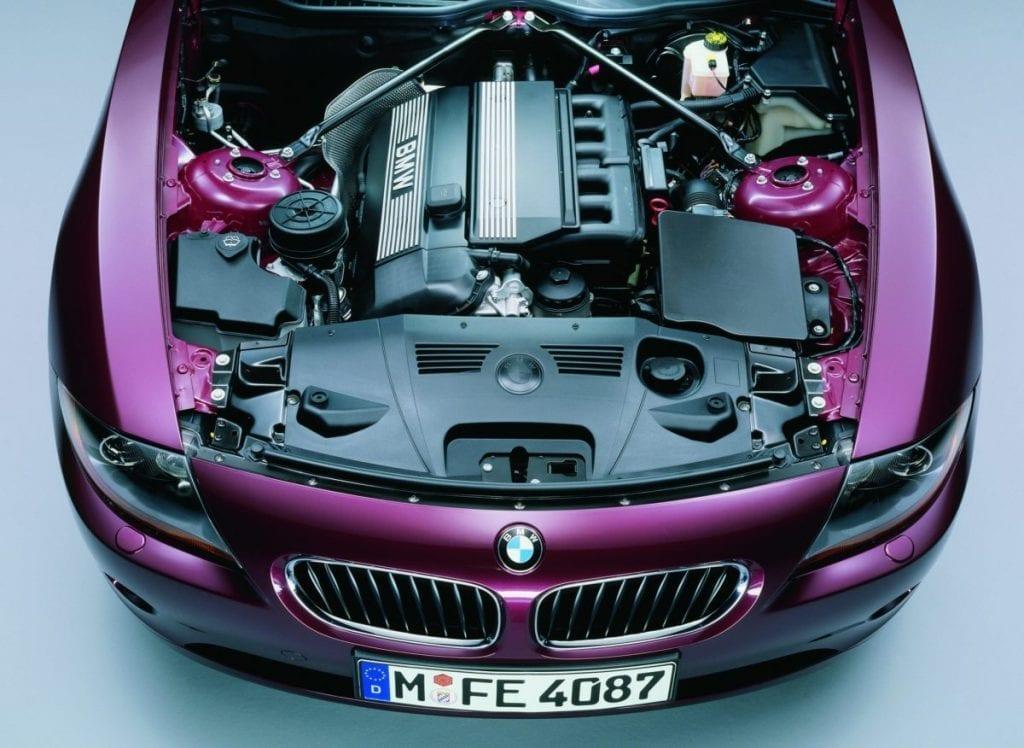
VANOS
Any Z4 engine can suffer from issues with VANOS, BMW’s variable valve timing system. Earlier cars will likely have worn and hardened VANOS seals, causing a loss of power and economy. In certain cases, worn VANOS units can cause rattling noises.
Fortunately rebuild kits are readily available and not expensive. A competent DIY’er should be able to refurbish the system in half a day.
Noisy Valve Lifters
Later models (from 2006 on) with the N52 engine occasionally exhibit rattling from the valve lifters. It’s not a fatal problem but can be annoying. Some owners claim in online forums to have solved the issue by using engine flushes to remove oil deposits and sludge. Others have replaced the entire cylinder head (usually under warranty.)
The best prevention seems to be performing more frequent oil changes using quality synthetic oils and filters. Look for evidence of this in the service records of any examples you may be considering.
Engine Gaskets
Rubber gaskets tend to harden and lose their ability to seal after repeated heat cycles and over time. No engine is immune to this. The Z4’s valve cover gasket along with the oil filter housing gasket tend to leak after 75k to 100k miles. The tell-tale sign is a trail of oil running down the side of the engine block to the plastic engine under tray and eventually onto the floor. Leaking valve cover gaskets also tend to leak oil onto the exhaust manifolds causing the distinct aroma of burnt oil. Fortunately, new gaskets are inexpensive and not complicated to replace.
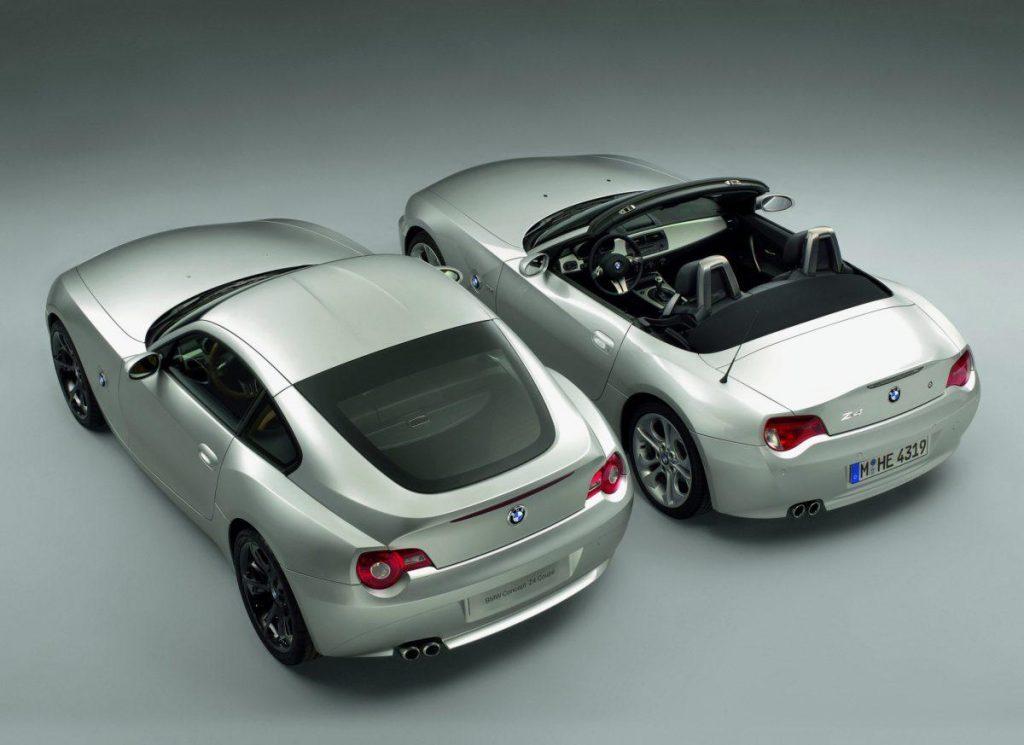
Convertible Tops
The fabric top of any roadster should be considered a wear item as inevitably it will need to be replaced. If you’re considering a car with a worn top, keep in mind that a quality aftermarket replacement part costs around $750 plus approximately 8 hours of labor to install.
While the Z4 roadster was available with a manual-folding fabric top, most were optioned with the power-folding feature, which contain various electric motors and hydraulic pumps that are also expensive to replace.
Before you purchase a Z4, make sure the power top operates properly. Once it’s yours, be sure to keep all of the body’s drain holes clear of debris. Clogged drains can cause water to collect around the top’s pumps and motors, breaking them.
Suspension
Keep an eye out for worn control arms and suspension bushings, which tend to need replacement every 75k to 90k miles. Worn units can cause the car to wander, handle oddly, or make knocking sounds when traveling over dips and bumps in the road.
SMG Transmissions
Generally speaking, we also suggest avoiding cars fitted with BMW’s sequential manual gearbox (SMG), which was offered from 2003 to 2005. They are not only expensive to repair, but their shifts are known to be slow and jerky — not to mention, they offer no real performance advantage.
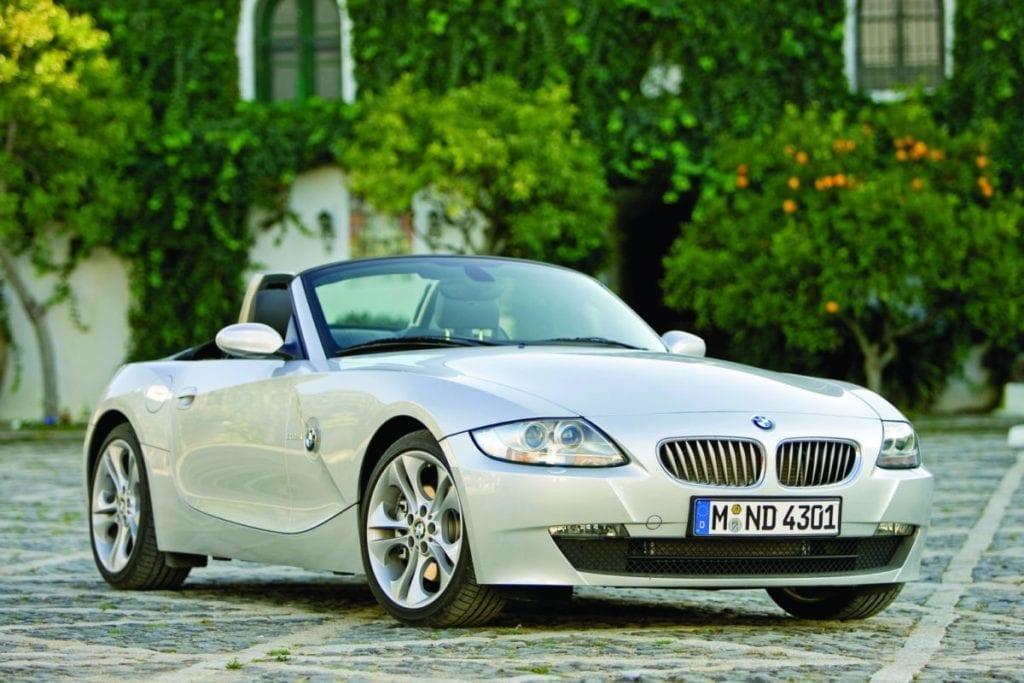
The Bottom Line
Perhaps what makes the Z4 so appealing as a used sports car is the fact that all of them feature a powerful, smooth, and sonorous inline six engine under the hood, twisting the rear wheels through a responsive (and hopefully manual) gearbox. It’s hard to go wrong with that setup.
But the Z4 also adds distinctive lines and high quality materials, and it has no major trouble spots. And despite being 10+ years old, the Z4 drives like a modern car and features enough safety equipment and creature comforts to be a daily driver, a weekend toy, a road tripper — or all of the above.
Parts are plentiful, and so is the enthusiast network, making DIY instructions and troubleshooting guides only a few keyboard clicks away.
Newer cars (many of them also BMWs), with their smaller, turbocharged 4 cylinder engines, aren’t quite as responsive. They aren’t as refined. They don’t sound as good. In fact, the inline six is becoming a rarity on the showroom floor, something found only in a brand’s most expensive new offerings.
Which makes these Z4s that much more appealing. Not only are they a fraction of the price of newer cars, their old-school big sixes, especially when lashed to a manual gearbox, deliver some of the finest motoring experiences that BMW — or anyone — has ever engineered.
So find a good, well-maintained example, give it proper care, and you’ll be enjoying this gem of a car for many years to come.
Photos courtesy of BMW